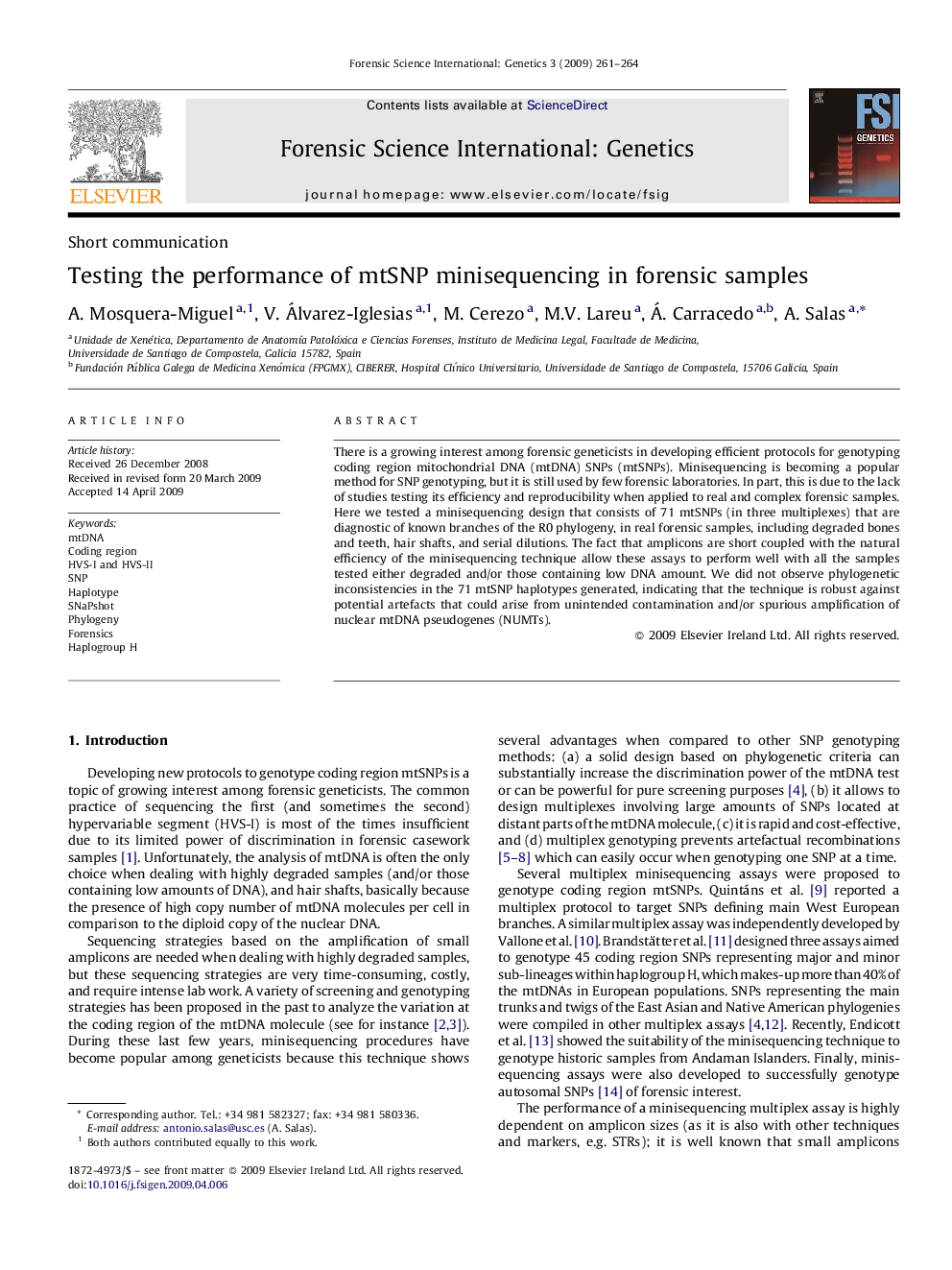| Article ID | Journal | Published Year | Pages | File Type |
|---|---|---|---|---|
| 99157 | Forensic Science International: Genetics | 2009 | 4 Pages |
There is a growing interest among forensic geneticists in developing efficient protocols for genotyping coding region mitochondrial DNA (mtDNA) SNPs (mtSNPs). Minisequencing is becoming a popular method for SNP genotyping, but it is still used by few forensic laboratories. In part, this is due to the lack of studies testing its efficiency and reproducibility when applied to real and complex forensic samples. Here we tested a minisequencing design that consists of 71 mtSNPs (in three multiplexes) that are diagnostic of known branches of the R0 phylogeny, in real forensic samples, including degraded bones and teeth, hair shafts, and serial dilutions. The fact that amplicons are short coupled with the natural efficiency of the minisequencing technique allow these assays to perform well with all the samples tested either degraded and/or those containing low DNA amount. We did not observe phylogenetic inconsistencies in the 71 mtSNP haplotypes generated, indicating that the technique is robust against potential artefacts that could arise from unintended contamination and/or spurious amplification of nuclear mtDNA pseudogenes (NUMTs).
